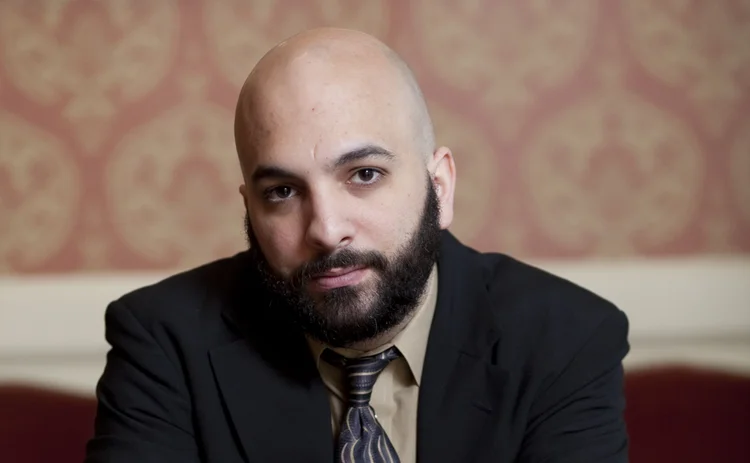A Case Study in Vendor Evolution

In the January issue of Waters, we profile Olympian Capital, along with its founder, Michael Levas, and its recently hired chief investment officer Arun Kaul. Olympian is a small hedge fund based in Fort Lauderdale with an interesting story to tell.
To build its new multi-asset trading platform, the firm chose to tap into the vendor community rather than keep the project in-house. This jumped out at me because prior to joining Olympian, Kaul was the co-founder of Hillsdale Investment Management, a Toronto-based hedge fund.
For 15 years, Kaul had built all the firms systems internally, rarely turning to the vendor community. He and Christopher Guthrie grew the firm from $2 million in assets back in 1996 to a respectable $500 million today.
So Kaul is deeply familiar and experienced with how to build a trading platform. Yet when he got to Olympian, he decided to buy.
"In my previous life, we built everything—risk management, portfolio management, research, trading and execution, which is the hardest part to build in terms of keeping up with the new technologies and straight cost," he says. "Here, it was a pure business decision to outsource the technology and not build in-house because it's a huge commitment—you can't half-build something."
On the front end, Kaul says, the vendor community has massively improved its offerings—from trade execution to portfolio design—and third-party algorithms are much improved, too. In addition, there is a massive amount of cheap, yet good, data available. The challenge, he says, is aggregating that data—and all the various systems—in a responsible, efficient manner.
"A lot of what we built at Hillsdale is available today at a much, much lower cost," he says. "The challenge is aggregation because you can get pieces of it and you have to then put it on a platform to bring it together."
Where the vendor community needs to improve, says Kaul, are in the areas of risk management and accounting systems. He believes that vendors can do a better job of offering solutions for the back office.
My colleague Sitanta Ni Mathghamhna recently wrote a story that highlighted some of the frustrations that the trading community has with vendors. The main problem, says Barry Chide, head of research and innovation at HSBC, is that they do not provide "complete" offerings, and they don't have adequate solutions to deal with new regulations, such as in the over-the-counter (OTC) derivatives space.
Basically, firms are looking for solutions to solve very complex processes—something that can work front-to-back—but they don't want the solution itself to be complex. Easy enough, right?
Only users who have a paid subscription or are part of a corporate subscription are able to print or copy content.
To access these options, along with all other subscription benefits, please contact info@waterstechnology.com or view our subscription options here: https://subscriptions.waterstechnology.com/subscribe
You are currently unable to print this content. Please contact info@waterstechnology.com to find out more.
You are currently unable to copy this content. Please contact info@waterstechnology.com to find out more.
Copyright Infopro Digital Limited. All rights reserved.
As outlined in our terms and conditions, https://www.infopro-digital.com/terms-and-conditions/subscriptions/ (point 2.4), printing is limited to a single copy.
If you would like to purchase additional rights please email info@waterstechnology.com
Copyright Infopro Digital Limited. All rights reserved.
You may share this content using our article tools. As outlined in our terms and conditions, https://www.infopro-digital.com/terms-and-conditions/subscriptions/ (clause 2.4), an Authorised User may only make one copy of the materials for their own personal use. You must also comply with the restrictions in clause 2.5.
If you would like to purchase additional rights please email info@waterstechnology.com
More on Trading Tech
Will overnight trading in equity markets expand next year? It’s complicated.
The potential for expanded overnight trading in US equity markets sparked debate this year, whether people liked it or not.
WatersTechnology latest edition
Check out our latest edition, plus more than 13 years of our best content.
The total portfolio approach gains momentum: Building the right tech foundation for success
The rationale for the TPA, and the crucial role technology plays in enabling such an approach
Google, CME say they’ve proved cloud can support HFT—now what?
After demonstrating in September that ultra-low-latency trading can be facilitated in the cloud, the exchange and tech giant are hoping to see barriers to entry come down.
Institutional priorities in multi-asset investing
Private markets, broader exposures and the race for integration
BlackRock and AccessFintech partner, LSEG collabs with OpenAI, Apex launches Pisces service, and more
The Waters Cooler: CJC launches MDC service, Centreon secures Sixth Street investment, UK bond CT update, and more in this week’s news roundup.
TCB Data-Broadhead pairing highlights challenges of market data management
Waters Wrap: The vendors are hoping that blending TCB’s reporting infrastructure with Broadhead’s DLT-backed digital contract and auditing engine will be the cure for data rights management.
Robeco tests credit tool built in Bloomberg’s Python platform
This follows the asset manager’s participation in Bloomberg’s Code Crunch hackathon in Singapore, alongside other firms including LGT Investment Bank and university students.








